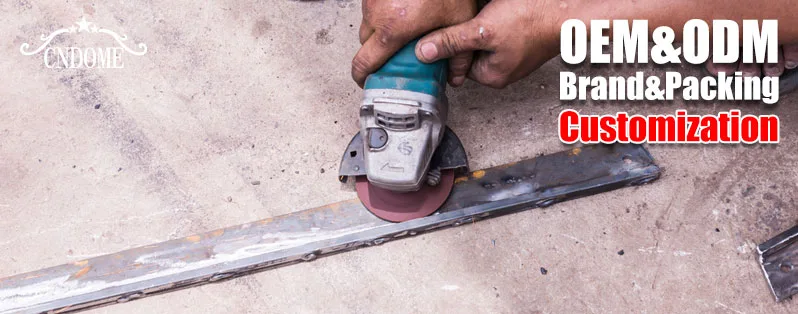Flap discs are versatile tools commonly used in metal fabrication, woodworking, and other industries for grinding, blending, and finishing tasks. One crucial aspect of flap discs that significantly impacts their performance is grit size. Grit size determines the aggressiveness of the disc, the surface finish it achieves, and its suitability for different applications. In this guide, we’ll delve into the significance of flap disc grit sizes and how to choose the right one for your needs.
What is Grit Size?
Grit size refers to the number of abrasive particles per square inch on the surface of the flap disc. It indicates the coarseness or fineness of the abrasive material. The grit size is typically denoted by a number, with higher numbers representing finer grits and lower numbers indicating coarser grits.
Understanding Grit Sizes:
Flap discs are available in a wide range of grit sizes, from coarse to very fine. Here’s a breakdown of common grit sizes and their applications:
1. Coarse Grits (24-60):
- Coarse grit flap discs, such as those with grit sizes between 24 and 60, are suitable for heavy material removal tasks. They are effective for grinding down welds, removing rust, and shaping metal quickly.
- These discs are less likely to clog but may leave deeper scratches on the workpiece surface. They are not ideal for achieving a smooth finish but excel in rapid material removal.
2. Medium Grits (80-120):
- Medium grit flap discs, typically ranging from 80 to 120, offer a balance between material removal and surface finish. They are versatile and commonly used for general grinding and blending applications.
- These discs provide moderate aggressiveness and are effective for smoothing out welds, deburring edges, and preparing surfaces for painting or coating.
3. Fine Grits (150-320):
- Fine grit flap discs, including grit sizes from 150 to 320, are designed for finishing tasks that require a smooth surface with minimal scratches. They excel in removing light surface imperfections and achieving a polished finish.
- These discs are ideal for blending in welds, removing surface contaminants, and preparing surfaces for final finishing touches. They produce finer surface finishes and are less aggressive, making them suitable for delicate materials.
Choosing the Right Grit Size:
Selecting the appropriate grit size depends on the specific requirements of your project:
- For heavy material removal and shaping tasks, opt for coarse grits (24-60).
- For general grinding and blending, medium grits (80-120) are suitable.
- For finishing and achieving smooth surfaces, choose fine grits (150-320).
It’s essential to consider the material type, desired surface finish, and efficiency when selecting the grit size. Additionally, factor in the speed of the grinder and the pressure applied during operation to achieve optimal results while maintaining safety.
Conclusion:
Flap disc grit sizes plays a crucial role in determining the performance and outcome of grinding, blending, and finishing tasks. Understanding the characteristics of different grit sizes allows you to select the most suitable flap disc for your specific application. By choosing the right grit size, you can achieve efficient material removal, excellent surface finishes, and overall project success.



